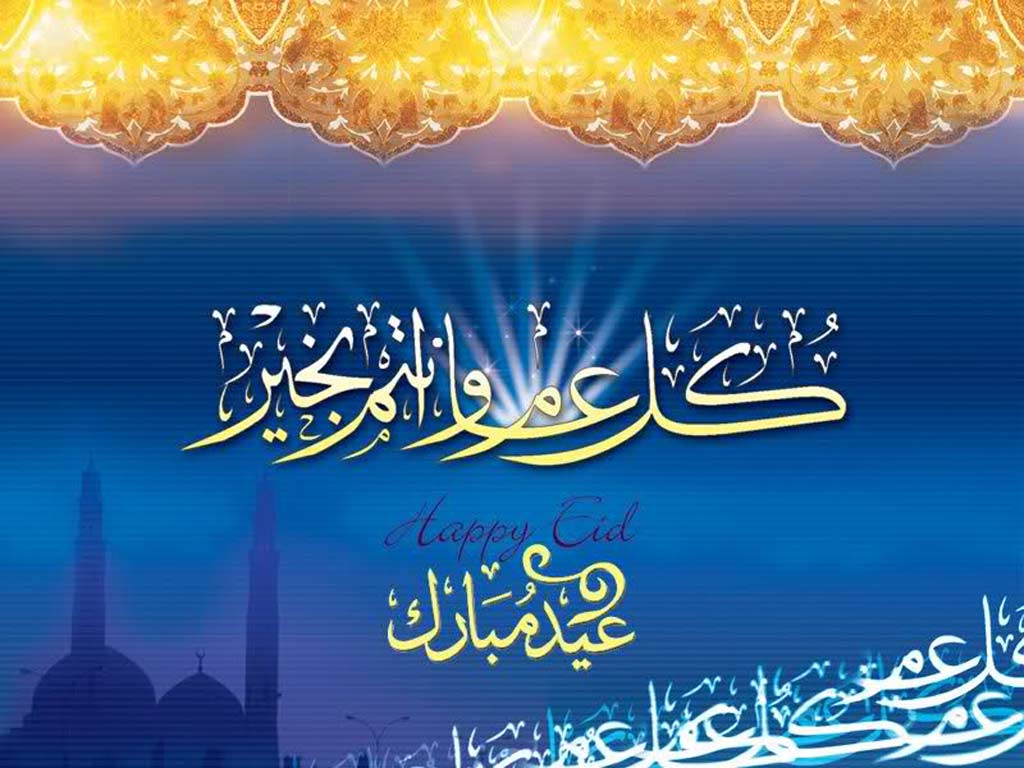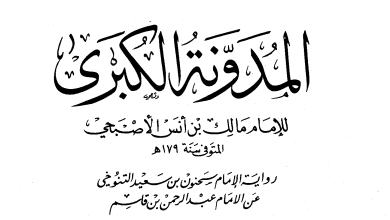Contentions on the Ziyada to Wa’il ibn Hujr’s Narration
Contentions on the Ziyada (additional wording) to Wa’il ibn Hujr’s (radhiallahu ‘anh) narration for the folding of the hands in Salah. A discussion on the ziyada “under the navel” as found in certain copies of the early Hadith collection known as the Musannaf of ibn Abi Shayba. This short work is a friendly response to Dr. G.F. Haddad of Lebanon by Shaykh Dr. Abul Hasan Hussain Ahmed of London, UK. Shaykh Dr. Abul Hasan Hussain Ahmed’s response is to the following –
A questioner asked if the naration attributed to Wa’il ibn Hujr (radhiallahu ‘anh) with the extra wording (ziyada) – “Under the navel” is a valid addition to some copies of al-Musannaf of ibn Abi Shayba or not to Dr. G.F. Haddad, followed by his response [Questioner’s comments are in bold]:
Wa `alaykum as-Salam wa rahmatullah:
I pray you are well. I wanted to ask an important question regarding Ziyada(t) to Nuskha(t) of hadith manuscripts. In the attached file you may see an analysis to the acceptability or rejection of a narration attributed to the Musannaf of Ibn Abi Shayba. It is in connection to the narration of Wa’il (ra) which mentions that al-Nabi (sallallallahu alaihi wa sallam) allegedly placed his hands beneath the navel in Salah. The Ziyada – “Under the navel” is not found in many of the available editions today and the first one who seemed to have mentioned it was al-Hafiz Ibn Qutlubugha (the student of al Hafiz ibn Hajar – who doesn’t seem to have known it also). These days, i saw that Shaykh Wahbi Ghawiji mentioned it in his editing of Multaqa al-Abhur, as did Shaykh Zafar al-Uthmani in his I’la al-Sunan and others. This ziyada was flatly rejected by Shaykh Muhammad Hayat al-Sindi in the past and the latters claim is promoted by al Mubarakpuri in his Tuhtfaul Ahwazi…
Shaykh Wahbi Ghawji wrote a book on the placement of the hands in Salat entitled Mawdi` al-Yadayn fil-Salat, which he summarizes in his book Arkan al-Islam (1:253-258) in the chapter on the Sunan of Salat. In the latter he states that the hadith of Ibn Abi Shayba with the ziyada is sahih without going into the controversy over it. However, Dr. Nur al-Din has tahqiq in hadith, and does not even mention that narration but only the athar of `Ali (coming up below) among others in his commentary on Ibn Hajar’s Bulugh al-Maram entitled I`lam al Anam (1:498), in his mention of the Hanafi position in the Sunan of Salat.
My question is thus:
In the footnote starred (*) – Does al-Nimawi finally endorse the ziyada that is found in some makhtutat or not? Please translate the passage from al-Nimawi and explain this by checking what is he implying in support of his final claim from Ibn Hajar’s Sharh on Nukhbatul fikr. Does it mean that if some manuscript(s) may not mention the extra ziyada to a narration, but another manuscript(s) does – one can accept the latter set of manuscript(s) or not? Please give quotes to support your thesis from the Huffaz of the past.The overwhelming proof is from the early narrators of the Hanafi and Hanbali Schools, who both hold hands below the navel but do not mention the ziyada of Ibn Abi Shayba to that effect. Abu Dawud mentions in his Sunan the riwayas of our liegelord `Ali, Abu Mijlaz, and Abu Hurayra; Imam Muhammad’s Aathaar mention that of Ibrahim al-Nakha`i; Imam Ahmad mentions the same marfu` chain as Ibn Abi Shayba without the ziyada. It is unthinkable they would all leave out a marfu` riwaya proving their position if they had knowledge of it; and if they did not have knowledge of it, it is because it probably didn’t exist.
Moreoever, Ibn Khuzayma in his Sahih reviews four different chains leading up to Wa’il, three of them without ziyada and the fourth with the ziyada: “on his chest.” This shows that he had no knowledge of the ziyada “under the navel.” Nor did al-Nasa’i, Muslim, and Ahmad who all exhaustively gathered up the various paths to Wa’il for this narration.
Shaykh Muhammad Hayat al-Sindi in Fath al-Ghafur fi Wad` al-Aydi `ala al-Sudur mentions the fact that the ziyada “under the navel” is not known before the time of Ibn Qutlubagha. Even after that time, the Hanafi authorities show no awareness of it when discussing the issue. Al-Sindi in Fath al-Ghafur mentions that Ibn Amir al-Hajj (d. 879) said in Sharh Munyat al-Musalli: “It is firmly established from the Sunna is the placing of the right hand on top of the left. There is no firmly established hadith requiring the exact spot of the body where such placing is to be except the said hadith of Wa’il,” meaning the ziyada “on his chest.” Similarly Ibn Nujaym (d. 970) in al-Bahr al-Ra’iq (1:303).
Mubarakpuri in Tuhtfat al-Ahwazi and Azim Abadi in `Awn al-Ma`bud provide decisive arguments in support of the position also held by al-Nimawi and Hayat al-Sindi. Saharanfuri on Abu Dawud quoting al Nimawi endorses him. Among the strongest proofs is the fact that the major Hanafi Fuqaha Huffaz had no knowledge of the navel ziyada such as Ibn al-Humam (d. 681) in Sharh Fath al-Qadir, Ibn al-Turkmani (d. 750) in al-Jawhar al-Naqi, and al-Zayla`i (d. 762) in Nasb al-Raya, and otherwise there is no way they would have all omitted mentioning it in their illustration of the Hanafi proofs.
Also among the proofs which none of the above mentions:
– Shaykh Mahmud al-Khattab al-Subki (d. 1352) in al-Manhal al-`Adhib al-Mawrud (5:163) mentions that Ibn al-Mundhir [in al-Awsat 3:90-94] mentioned that holding hands below the navel was the position of Abu Hurayra, al-Nakha`i, and Abu Mijlaz, showing no awareness of Ibn Abi Shayba’s marfu` ziyada. Al-Subki himself doesn’t bring it up.
– Imam al-Badr al-`Ayni in his Sharh Sunan Abi Dawud (Riyadh ed. 3:354-357) when discussing the athar of our liegelord `Ali radya Allahu `anh: “The Sunna is to place the hand on top of the hand below the navel” goes meticulously into the chain and the various nusakh of Abu Dawud then the Hanafi madhhab but does not mention Ibn Abi Shayba, although he mentions Ibn Hazm’s supporting maqwquf narration from Anas “Min akhlaq al-nubuwwa wad` al-yamin `ala al-shimal tahta al-surra,” which is infinitely less probative than the marfu` narration with Ibn Abi Shayba’s chain, since Ibn Hazm does not even provide a chain for it [Muhalla 4:158].
– Ibn al-Qayyim’s omission of the same in his endorsement of the position below the navel in Bada’i` al-Fawa’id (Makka 1996 ed. 3:600=Beirut 1994 ed. 2:95) and I`lam al-Muwaqqi`in (Beirut 1973 ed. 2:401=Dammam Mashhur 2002 ed. 4:287) although he not only ventures to declare the athar of our liegelord `Ali as sahih – which is more than al-`Ayni himself was prepared to say in `Umdat al-Qari (5:279) – but he also highlights the ziyada “on his chest” in the hadith of Wa’il!
The latter-day Hanafis hold that the addition “on his chest” is itself a textual corruption, as al-Nimawi suggested in his Ta`liq al-Hasan `ala Aathaar al-Sunan (1:67) as cited in I`la’ al-Sunan (2:196): “In my heart I think it is a textual corruption (tas-hif).” It should be even more definite that the addition “under his navel” is a textual corruption corruption by the same token; and this is precisely what al-Nimawi goes on to say a few pages later (1:70), also as cited in the I`la’ (2:199).
Indeed, the Riyadh edition of the Musannaf (2:334) which is one of the two best editions of the Musannaf, the other being that of Shaykh Muhammad `Awwama (I have not seen it), mentions the hadith of Wa’il without the ziyada but has this footnote: “In manuscript M: ‘shimalihi fil-salati tahta al-surra,’ and the copyist’s gaze probably jumped to the next athar [which has those very words], so he copied from it the words ‘tahta al-surra.'” This is a very pertinent observation and is the gist of what al-Nimawi said before them.
As for Shaykh Zafar al-Tahanawi’s objection to al-Nimawi that “If that addition were found in only one copy, we would agree to his point; however, when it is found in many, then the probability that all the copyist’s gazes went astray is not granted” (I`la al-Sunan 2:199): this argument does not properly address the stemma. First, the same can be said of the manuscripts of Ibn Abi Shayba which do NOT have the ziyada: it is improbable the copyists all missed it. Second, it is quite possible that the ziyada copies all go back to a single faulty manuscript lesson.
This conclusion solves the enigma of an addition suddenly popping up from the time of Ibn Qutlubagha, and Allah Most High knows best.
As for the starred footnote, al-Nimawi’s words mean:
“His words: ‘however, it is weak from the aspect of text’: I say: This is according to what we have ascertained just now. However, according to the position of hafiz Ibn Hajar in Sharh al-Nukhba, this addition is accepted [as textually authentic], and preponderance needs to be established between itself and whatever contradicts it; because this narration has a shorter chain than the narration ‘on his chest’ and the like, narrated by Ibn Khuzayma and al-Bazzar.”
This is a parting shot to the effect that it would be more correct for the Hanafis to accept the ziyada “under the navel” than for the Shafi`is to accept the ziyada “on his chest”, and he very laconically invokes Ibn Hajar’s Sharh al-Nukhba concerning the “ziyada fil-matn”, and Allah knows best.
Al-Tatawi wrote a short treatise entitled Dirham al-Surra fi Wad` al-Yadayn Taht al-Surra, but I didn’t see it.
Was-Salam,
GF Haddad
Preview Shaykh Dr. Abul Hasan Hussain Ahmed’s response:
Download his response HERE






